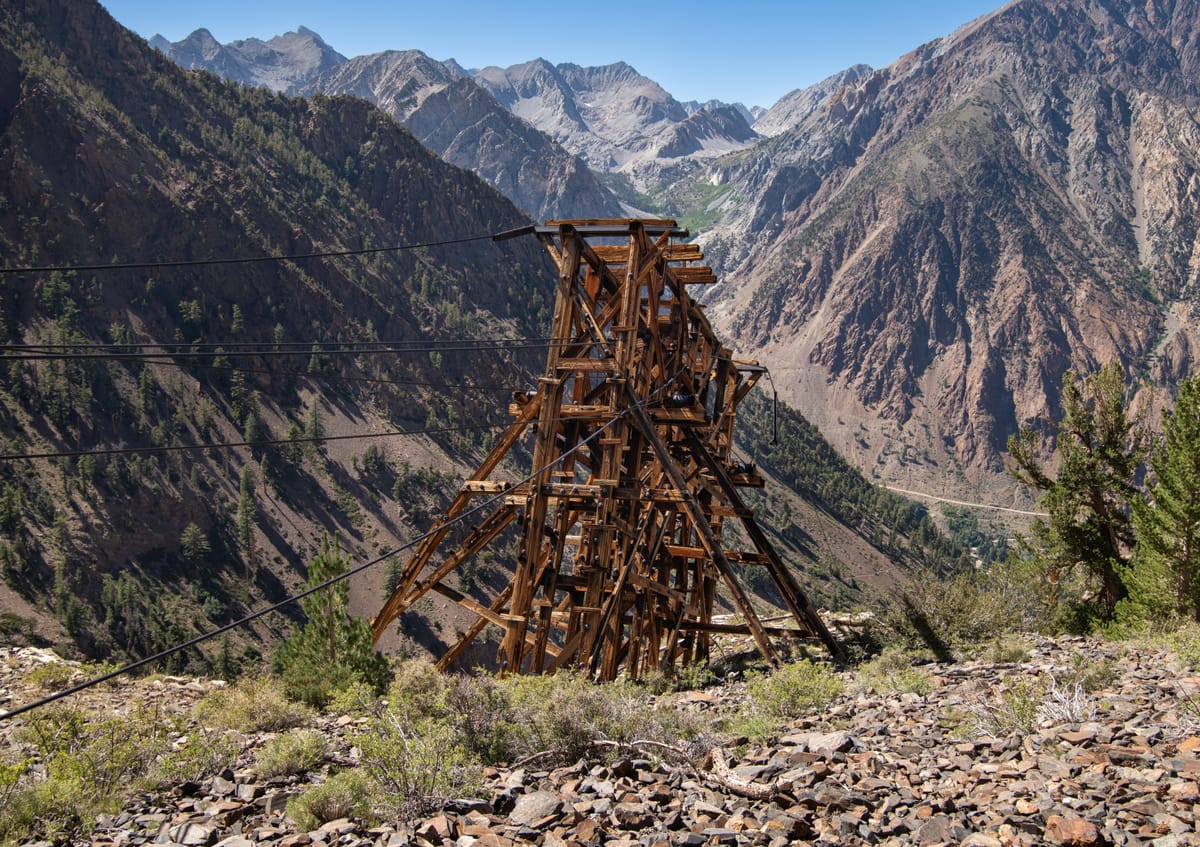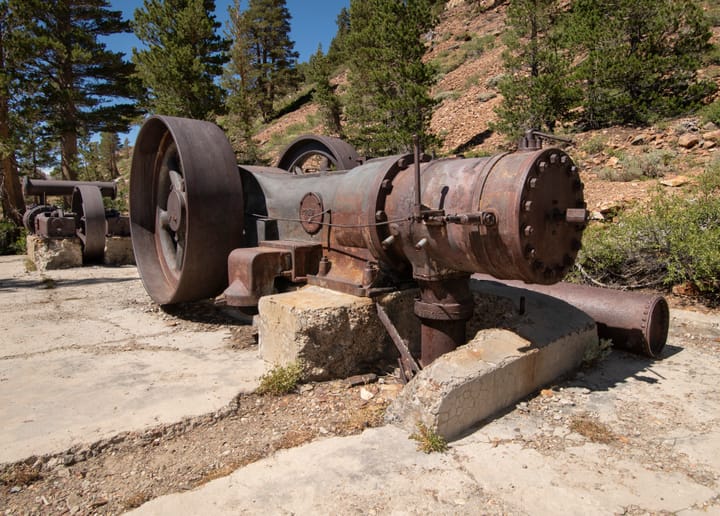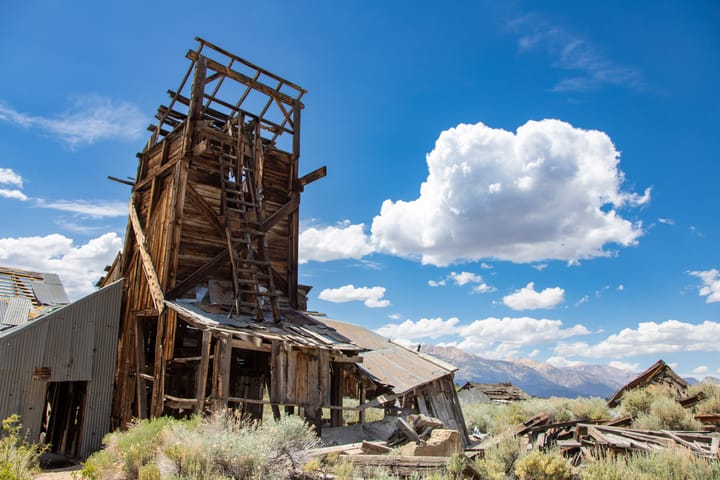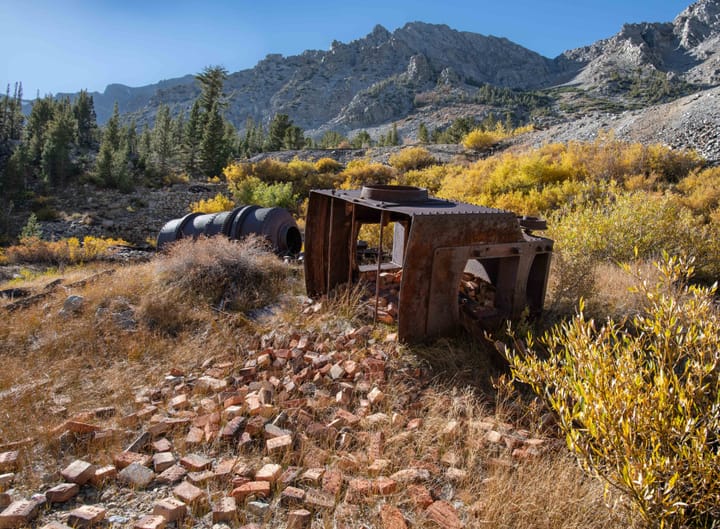This very adventurous hike follows an old mining trail which led to the Tungstar Mine, a 1940s tungsten mine high on the western slope of Mt. Tom, the prominent 13,658-foot peak just west of Bishop. The trail was used in the early days of the mine to build a tram between the mine and the Tungstar Mill, situated on the floor of Pine Creek Canyon next to today's Pine Creek Pack Station. The trail, now designated the "Gable Lakes Trail" in the Inyo National Forest, forks about one mile from the trailhead. The maintained Gable Lakes Trail continues on to Gable Lakes and the Lakeview Mine. Several of the lower tram towers can be easily seen close to the trail along the first mile.
At the fork, the unmaintained mine/tram trail crosses Gable Creek, then winds its way up to the Tungstar Mine at 12,000 feet. Hiking this part of the trail involves a difficult creek crossing, as well as navigating very steep and rugged terrain along a spotty trail that has seen little use since the 1940s.
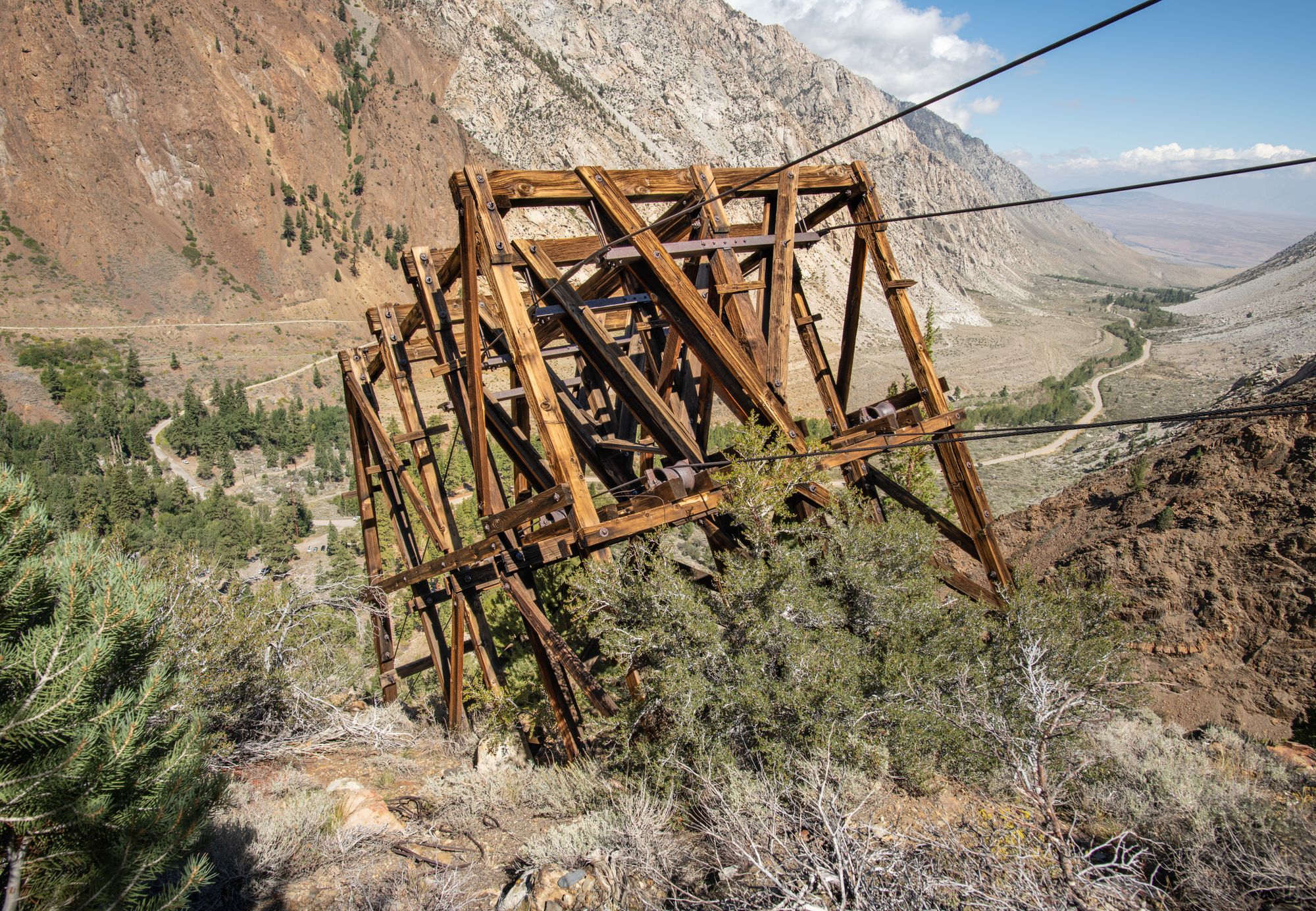
History
Several scheelite deposits (a tungsten ore) were discovered in the Pine Creek area in the 1930s. With the advent of WWII, the remote deposits at higher elevations became economically feasible to mine. The nearby Pine Creek Mine, behind the locked gate next to the pack station, would become the leading tungsten producer in California, with the Tungstar Mine in second place. Several movie stars, including Randolf Scott and Shirley Temple (through her father), invested in the Tungstar claim, hence the name of the mine (tungsten and movie star). Because the extent of the ore deposit was not yet known, the investors initially authorized only a limited budget. A small mill was built near the junction of Gable and Pine Creeks, and the R. N. Riblet Tramway Company was contracted to design and build a tram from the mine to the mill.
Within a year, it became apparent that a larger mill and a better tram would be needed. The original tram towers were too small for the tram buckets to clear large snowdrifts in the winter, and the tram was plagued by frequent breakdowns. The Western-Knapp Engineering Company of San Francisco was then contracted to build a new, larger mill in 1940, and subsequently a larger and more reliable tram.
